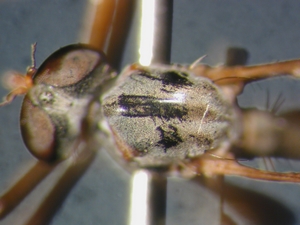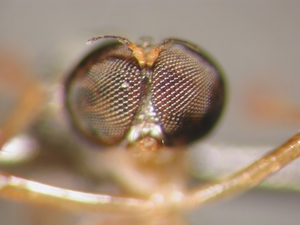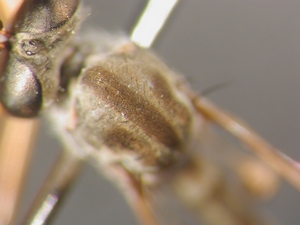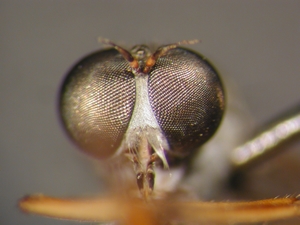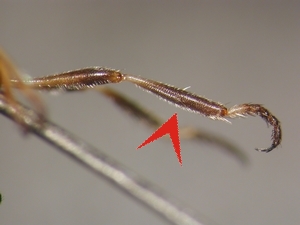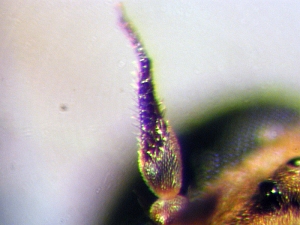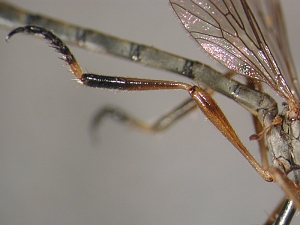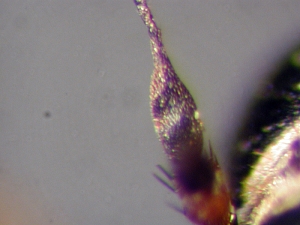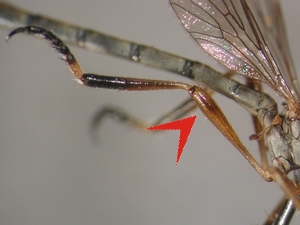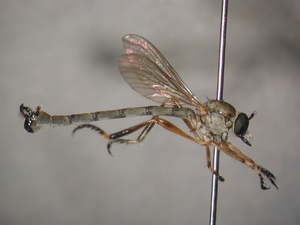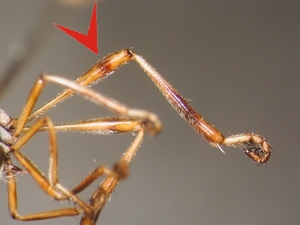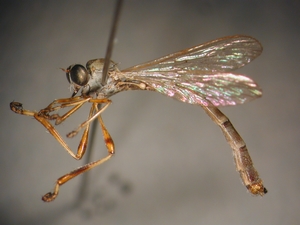g
Start g
- Robber flies of Germany -
[Key] Catalogue Comparisons Notes Terminology
key
- Subfamilies
- Leptogastrinae
contents & layout
& copyright:
Fritz Geller-Grimm
Imprint
Only one genus with four species is known from Germany and the identification of these species is not easy in any case. The coloration in some characters is variable within species and therefore it is not helpful to use such features, e.g. colour of postocular bristles (occipital bristles) or antenna. This genus is a good example for the necessity of photographs for identification. There is a comparison table at the bottom of this page, which lists several characters of all included species.
L. cylindrica is very common and can be determined by the coloration of the hind legs. On the other hand L. subtilis is a rare species, which is often found in beech-forests of south-east Central Europe. The species shows a number of outstanding characteristics. I have only been able to collect two female specimens in my house until now.
The diagnosis of the hairs of the postpedicel (3rd antennal segment) made by WEINBERG & BÄCHLI (1995, S. 71) differs from my own observations.
A photographic comparison table is also available.
| 1 a. |
Scutum (mesonotum) with a shiny central stripe and lateral spots [Fig. 1]; smallest distance between eyes shorter than length of pedicel (2nd antennal segment) [Fig. 2] - further characters: cf. table
. . . . . . . . . . . .
|
| 1 b. |
Scutum (mesonotum) without such shiny stripe or spots [Fig. 3]; smallest distance between eyes wider than length of pedicel (2nd antennal segment) [Fig. 4]
. . . . . . . . . . . .
|
| 2 a. |
Hind tibia widest at middle, width increasing up to the middle and then decreasing to tip [Fig. 5]; postpedicel tomentose basally, shiny apically [Fig. 6] - further characters: cf. table
. . . . . . . . . . . .
|
| 2 b. |
Hind tibia gradually widening (greatest width at tip) [Fig. 7]; postpedicel entirely tomentose [Fig. 8]
. . . . . . . . . . . .
|
| 3 a. |
Hind femur with dark longitudinal stripe laterally, which is broader in apical third; hind tibia with dark longitudinal stripe laterally and apical third of tibia completely dark [Fig. 9]; tergites usually with a dark longitudinal stripe medially [Fig. 10] - further characters: cf. table
. . . . . . . . . . . .
|
| 3 b. |
Hind femur with dark ring in apical third, edges of this ring blurred; hind tibia with dark area starting before middle, but apical fourth lighter [Fig. 11]; tergites more or less with transverse spots, which do not reach sides of each segment [Fig. 12] - further characters: cf. table
. . . . . . . . . . . .
|
